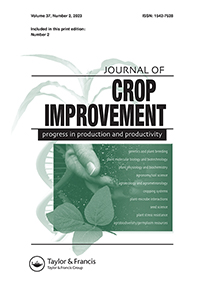Response of banana (Musa spp.) to drought stress based on phenotypic and physiological traits
Banana (Musa spp.), an important staple food in the tropical and subtropical regions, is highly susceptible to drought. Developing drought-tolerant bananas using available germplasm offers a long-term solution to mitigate drought effects. The East and Central Africa Banana Germplasm Collection in Uganda contains genetically diverse genotypes whose potential for drought tolerance breeding is yet to be established. This study aimed to determine the response of 14 Musa spp. genotypes to drought stress using phenotypic and physiological traits in order to select promising genotypes for use in breeding. Two genotypes with a known reaction to water deficit conditions were included as local checks. Three-month-old tissue culture-derived plantlets were completely deprived of water for four weeks while control plants were regularly irrigated back to field capacity, and both sets maintained under screen-house conditions. Drought stress resulted in significant reductions in plant height, total leaf area, number of leaf cigars and functional leaves, total dry matter, chlorophyll and relative water content. Water use efficiency (WUE) of 12 genotypes increased under stress conditions. Stomatal conductance was affected by the genotype-porometer reading time interaction. Genotype “ITC.0987” was the most tolerant, considering that moisture stress had the least effect on its above-ground growth. Among the improved diploids, “TMB2x9722-1” had the least total dry matter reduction and highest WUE, while “TMB2x9172” showed the least decrease in relative water content and highest root-shoot ratio increase under stress. Thus, “ITC.0987”, “TMB2x9722-1” and “TMB2x9172” are essential drought-tolerant candidates that may be utilized in breeding.

